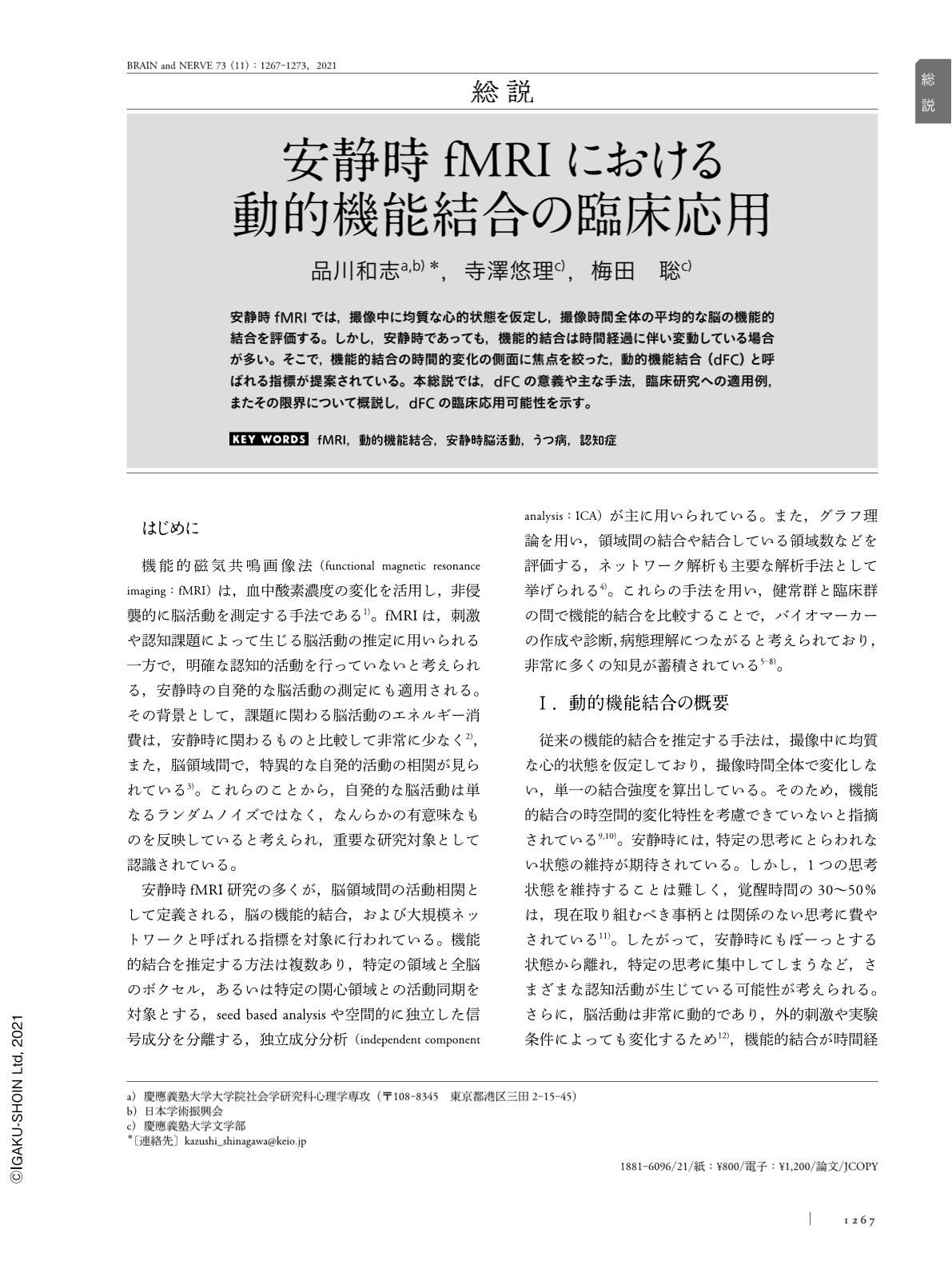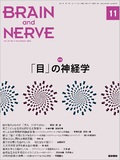Japanese
English
- 有料閲覧
- Abstract 文献概要
- 1ページ目 Look Inside
- 参考文献 Reference
安静時fMRIでは,撮像中に均質な心的状態を仮定し,撮像時間全体の平均的な脳の機能的結合を評価する。しかし,安静時であっても,機能的結合は時間経過に伴い変動している場合が多い。そこで,機能的結合の時間的変化の側面に焦点を絞った,動的機能結合(dFC)と呼ばれる指標が提案されている。本総説では,dFCの意義や主な手法,臨床研究への適用例,またその限界について概説し,dFCの臨床応用可能性を示す。
Abstract
The conventional analysis assumes a constant mental state during scanning and assesses the strength of functional connectivity as the average of the entire fMRI data. However, it is suggested that even at rest, functional connectivity may change with time, and the conventional analysis has not been able to fully evaluate its properties. To overcome this limitation, many studies propose an index called dynamic functional connectivity (dFC) or time-varying functional connectivity (TVFC) or the chronnectome. This article reviews the significance and methods of dFC, examples of its application in clinical studies, and its limitations. Finally, we discuss its potential for clinical application.

Copyright © 2021, Igaku-Shoin Ltd. All rights reserved.


